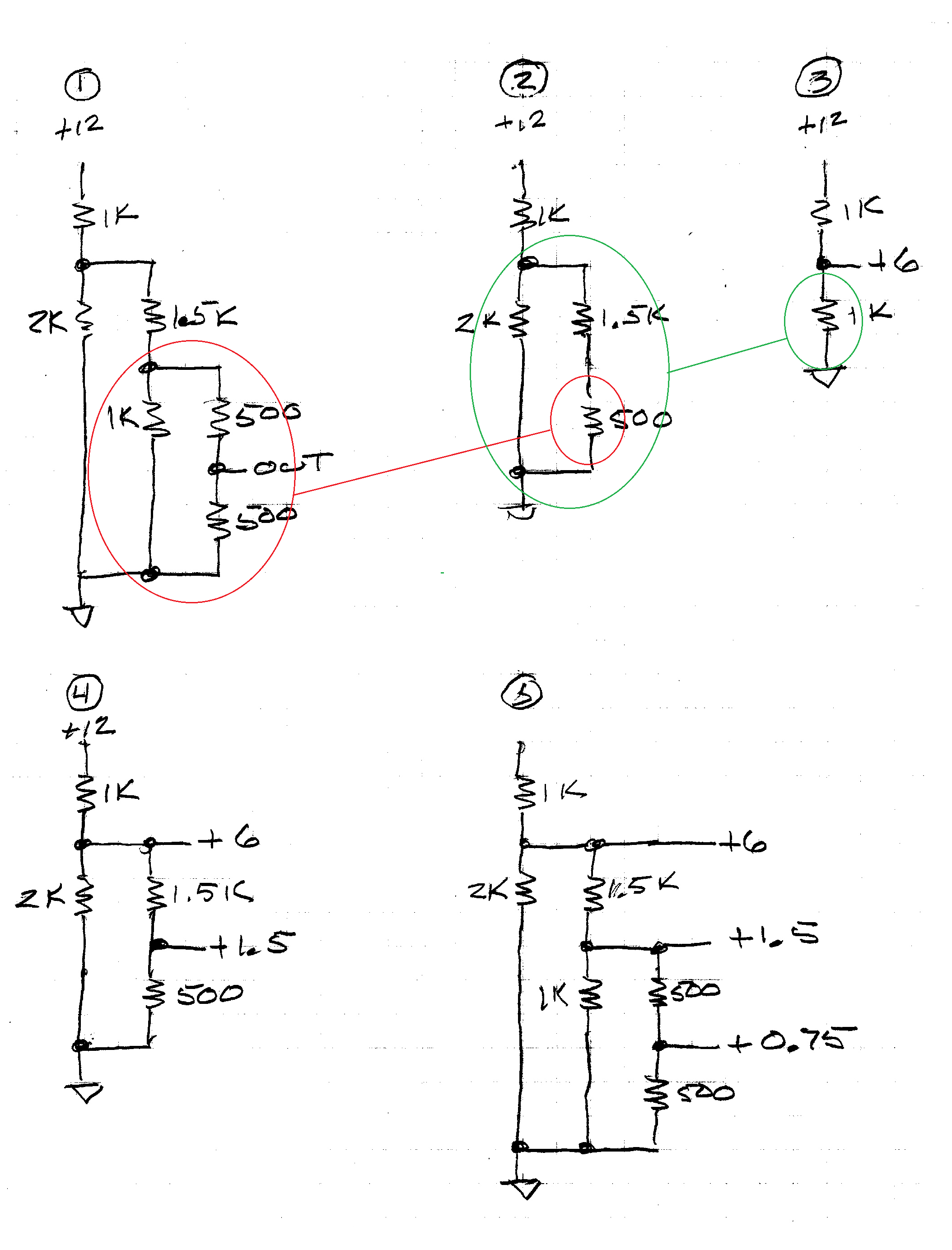In 1, below, the two 500 ohm rtesistorsresistors are in series, so they add to an equivalent resistance of 1000 ohms.
That 1000 ohms is in parallel with the 1000 ohm resistor, making the total resistance of the series-parallel network 500 ohms, as shown in 2.
In 2, the 500 ohm net is in series with the 1500 ohm resistor so they add to 2000 ohms. That 2000 ohms is in parallel with the 2000 ohm resistor, making the total resistance equal to 1000 ohms, as shown in 3.
In 3 we have the 1000 ohm net in series with 1000 ohms, creating a voltage divider with an output voltage equal to half of its input, or 3 volts.
In 4. we have redrawn 2, and we can use the 6 volts we got in 3 as the input to the 1500+500 ohm voltage divider, which will give us an output of 1.5 volts.
In 5 we have reconstructed 1, and with the voltage we got from 4 and, as in 4, we can find the voltage originally being sought, which is 0.75 volts.

